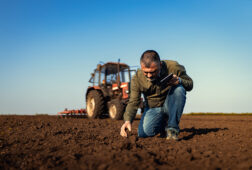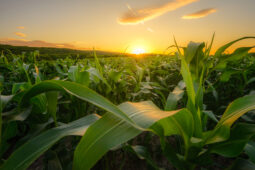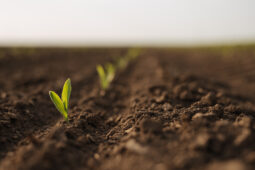This year’s planting season has already been majorly affected by the soaring cost of fertilizers – the cost of urea is up 149%, nitrogen is up 192% and ammonia is up 235%. Unfortunately, experts at the USDA don’t believe the cost will fall anytime soon.
How can farmers adjust fertility programs to offset cost increases while still limiting the environmental impact of their farms? Consider the following tips to improve productivity while reducing your overall environmental impact:
1. Test soil – The first, and arguably most important step to creating an efficient fertilizer management program is to determine what your soil may need to support crop growth. Each field will have different results and should be tested separately. Soils should be sampled around every three years and when crops are rotated. A standard soil test will measure the availability of nitrogen (N), phosphorous (P), potassium (K), and micronutrients that are available to planted crops in the soil as well as acidity or alkalinity (pH) and organic matter content. This allows for proper planning and purchase of necessary fertilizers without purchasing too much or needing to reorder later in the season, which could mean higher prices.
The consideration of nitrogen (N) application is also important in fertilizer management. It’s recommended to have a Pre-Sidedress Nitrate Test (PSNT) done to measure nitrate levels left behind from previous crop rotations or manure application. PSNT testing should be completed before the plants’ peak growing weeks. The amount of nitrate present at the time of the test will also indicate how much N will be released during the remaining growth stages. If the PSNT calls for additional N fertilizer, it can be applied as a sidedress or topdress application.
It is important to partner with a lab that has accreditations with reputable certification organizations such as The North American Proficiency Testing Program (NAPT), Agriculture Laboratory Proficiency Program (ALP), Wisconsin DATCP Soil Testing Laboratory Certification Program (WI-DATCP) and Agriculture Laboratory Testing Association Soil Analysis Certification (ALTA-SAC).
2. Conduct variable rate application (VRA) – VRA involves the application of different rates and/or types of fertilizers within the same field to accommodate for areas of different soil types and nutrient levels. If the land has enough varying soil types, a pre-set field map is created using data like soil health and topography, previous crop yield, soil salinity and texture, and in some cases, infrared satellite imagery to optimize fertilizer inputs as well as crop health and yield. Some operations may also use variable rate planting when determining seed type, which would create a subsequential need for variable rate fertilizer application. These technical processes offer data to ensure a grower is prepared for the season ahead while ensuring top productivity.
3. Use enhanced efficiency fertilizers (EEFs) – BiOWiSH® Crop Liquid is a blend of proprietary microbial cultures that can be coated onto dry fertilizer or mixed with liquid fertilizers to create a new class of enhanced efficiency fertilizer specifically designed to optimize yield potential and improve soil productivity. These EEFs are available through a network of fertilizer distributors and cultivated to reduce nutrient losses to the environment while increasing nutrient availability to crops. Biologicals have multiple functions, including the ability to promote soil quality and nutrient cycling in a way that supports the crop’s natural ability to resist environmental stress – creating healthier and more productive fields. In addition, BiOWiSH® has been proven to increase crop yield even when the rate of fertilizer is reduced, as demonstrated in this research study with Helena Agri-Enterprises.
A Balance of Sustainability and Profitability
These processes, along with others that may be applicable to your specific farm goals, will create a productive fertilizer management program that also reduces environmental impact. Soil testing and variable rate application will make sure growers are being efficient with time and labor, reducing overall operating costs. When combined with the use of BiOWiSH® Enhanced Efficiency Fertilizers, growers can lower overall greenhouse gas emissions and pollution of groundwater and runoff.
Learn more about BiOWiSH® Crop Liquid at biowishtech.com/product/crop-liquid.





